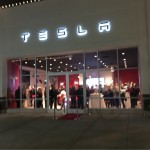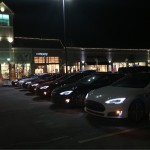Lifestyle
Model 3 Buyers May Miss Out On Federal Tax Credits
By the time Tesla starts building its entry level Model 3 cars, the federal tax credit may have long since expired.

Model 3 buyers may not be able to take advantage of the $7,500 federal tax credit for electric vehicles, for two reasons. First, the federal credit under Internal Revenue Code Section 30D (IRC 30D) begins to decrease once a manufacturer reaches 200,000 qualifying EV sales in the US.
Second, the $35,000 price tag of the Model 3 (before incentives) will appeal to mass market buyers who may not necessarily fall into the same high income bracket as those that purchase the Model S and Model X. As Evan Niu of The Motley Fool explains, “The $7,500 credit can only be applied if the customer has a tax liability of $7,500 or more, and any unused portion is not refundable and can not be carried forward”. This means any person taking home $50,000 a year or less may not have a large enough tax liability to qualify for the full $7,500 federal tax credit.
Let’s take a closer look at both of these factors.
The Incredible Shrinking Tax Credit
Congress, in its infinite wisdom, enacted the federal tax credit to give manufacturers an incentive to sell electric cars. It is a pump priming strategy that was meant to have a relatively short shelf life at 200,000 vehicles sold.
Tesla does not break down its sales numbers by country, but in its most recent letter to shareholders it said it sold 42,000 Model S sedans in America in 2014 and 2015. Elon Musk says the company will deliver between 80,000 and 90,000 cars this year. Assuming half of those go to US customers and adding in estimated sales in 2012 and 2013, Tesla could approach that 200,000 mark in calendar year 2018.
Pictured above: Tesla Store grand opening in Hingham, MA via Rob M
After that, the EV incentive program enters into a “phase out period” at which point the tax credits are cut to 50% and 25% of the original $7,500 credit over the next 6 to 12 months, respectively, until the plan is eventually phased out in its entirety. Based on Tesla’s sales figures and projected growth rate, analysts expect that to happen for Tesla in 2018.
IRC 30D states:
The qualified plug-in electric drive motor vehicle credit phases out for a manufacturer’s vehicles over the one-year period beginning with the second calendar quarter after the calendar quarter in which at least 200,000 qualifying vehicles manufactured by that manufacturer have been sold for use in the United States (determined on a cumulative basis for sales after December 31, 2009) (“phase-out period”).
Qualifying vehicles manufactured by that manufacturer are eligible for 50 percent of the credit if acquired in the first two quarters of the phase-out period and 25 percent of the credit if acquired in the third or fourth quarter of the phase-out period. Vehicles manufactured by that manufacturer are not eligible for a credit if acquired after the phase-out period.
The critical factor in determining whether Model 3 buyers will be able to take advantage of the full tax credit will be timing. For every month the Model 3 gets delayed, more Model S and Model X cars will be sold, getting the company closer to that 200,000 phase out period.
The Demographics of Model 3 Buyers
It seems fairly obvious that someone looking for a $35,000 Model 3 will be in a different socio-economic status than a person looking to purchase a Model S P90D. The way the federal tax credit is set up, if a person only owes $5,000 to the IRS for the year in which a qualifying car is purchased, the credit is limited to $5,000. Any excess is lost. The taxpayer cannot carry over any unused portion to a subsequent tax year.
Other Considerations
Several other factors will make that $35,000 Model 3 a rare bird indeed. Tesla has already indicated it will build the cars with the most options first. This is normal procedure for the company. For instance, manufacturing on the Founders Edition and Signature Series Model X began first followed by P90D production cars. It may be a while yet before any entry level 70D Model X cars get built.
Similarly, the first Model 3 cars will likely have the largest battery available (70 kWh? 90 kWh?). If dual motors are offered, the first cars will have those as well. Panoramic roof, upgraded interiors, premium sound systems, Autopilot activation, and a host of other extra cost options will push many cars close to $60,000. Even with the full federal tax credit, a fully loaded Model 3 will cost far more than $35,000.
It could easily be a year or more after the Model 3 is introduced before any entry level $35,000 Model 3 is available. By then, the federal tax credit will likely be long since used up.
Related Model 3 News
Lifestyle
Tesla Model S Plaid battles China’s 1500 hp monster Nurburgring monster, with surprising results
There is just something about Tesla’s tuning and refinement that makes raw specs seem not as game-changing.

The Tesla Model S Plaid has been around for some time. Today, it is no longer the world’s quickest four-door electric sedan, nor is it the most powerful. As per a recent video from motoring YouTube channel Carwow, however, it seems like the Model S Plaid is still more than a match for some of its newer and more powerful rivals.
The monster from China
The Xiaomi SU7 Ultra is nothing short of a monster. Just like the Model S Plaid, it features three motors. It also has 1,548 hp and 1,770 Nm of torque. It’s All Wheel Drive and weighs a hefty 2,360 kg. The vehicle, which costs just about the equivalent of £55,000, has been recorded setting an insane 7:04.957 at the Nurburgring, surpassing the previous record held by the Porsche Taycan Turbo GT.
For all intents and purposes, the Model S Plaid looked outgunned in Carwow’s test. The Model S Plaid is no slouch with its three motors that produce 1,020 hp and 1,420 Nm of torque. It’s also a bit lighter at 2,190 kg despite its larger size. However, as the Carwow host pointed out, the Model S Plaid holds a 7:25.231 record in the Nurburgring. Compared to the Xiaomi SU7 Ultra’s record, the Model S Plaid’s lap time is notably slower.
Real-world tests
As could be seen in Carwow’s drag races, however, Tesla’s tech wizardry with the Model S Plaid is still hard to beat. The two vehicles competed in nine races, and the older Model S Plaid actually beat its newer, more powerful counterpart from China several times. At one point in the race, the Xiaomi SU7 Ultra hit its power limit due to its battery’s temperature, but the Model S Plaid was still going strong.
The Model S Plaid was first teased five years ago, in September 2020 during Tesla’s Battery Day. Since then, cars like the Lucid Air Sapphire and the Xiaomi SU7 Ultra have been released, surpassing its specs. But just like the Model Y ended up being the better all-rounder compared to the BYD Sealion 7 and the MG IM6, there is just something about Tesla’s tuning and refinement that makes raw specs seem not as game-changing.
Check out Carwow’s Model S Plaid vs Xiaomi SU7 drag race video below.
Lifestyle
500-mile test proves why Tesla Model Y still humiliates rivals in Europe
On paper, the BYD Sealion 7 and MG IM6 promised standout capabilities against the Model Y.

BYD is seeing a lot of momentum in Europe, so much so that mainstream media has taken every opportunity to argue that the Chinese automaker has beaten Tesla in the region. But while BYD sales this year in Europe are rising and Tesla’s registrations remain challenged, the raw capabilities of vehicles like the Model Y are difficult to deny.
This was highlighted in a 500-mile challenge by What Car? magazine, which showed that the new Tesla Model Y is more efficient, cheaper to run, and more reliable than rivals like the BYD Sealion 7, and even the nearly 400 KW-charging MG IM6.
Range and charging promises
On paper, the BYD Sealion 7 and MG IM6 promised standout capabilities against the Model Y. The Sealion 7 had more estimated range and the IM6 promised significantly faster charging. When faced with real-world conditions, however, it was still the Model Y that proved superior.
During the 500-mile test, the BYD nearly failed to reach a charging stop, arriving with less range than its display projected, as noted in a CarUp report. MG fared better, but its charging speeds never reached its promised nearly-400 kW charging speed. Tesla’s Model Y, by comparison, managed energy calculations precisely and arrived at each stop without issue.
Tesla leads in areas that matter
Charging times from 25% to 80% showed that the MG was the fastest at 17 minutes, while Tesla and BYD were close at 28 and 29 minutes, respectively. Overall efficiency and cost told a different story, however. The Model Y consumed 19.4 kWh per 100 km, compared to 22.2 for MG and 23.9 for BYD. Over the full trip, Tesla’s charging costs totaled just £82 thanks to its supercharger network, far below BYD’s £130 and MG’s £119.
What Car? Magazine’s testers concluded that despite BYD’s rapid sales growth and the MG IM6’s seriously impressive charging speeds, Tesla remains the more compelling real-world choice. The Model Y just offers stability, efficiency, and a proven charging infrastructure through its Supercharging network. And as per the magazine’s hosts, the Model Y is even the cheapest car to own among the three that were tested.
Watch What Car? Magazine’s 500-mile test in the video below.
Lifestyle
Tesla Cybertruck slapped with world’s least intimidating ticket, and it’s pure cringe
One cannot help but cringe and feel second-hand embarrassment at the idea of a person just driving around with a stack of these babies.

A Cybertruck parked at Stanford Shopping Center in California was recently hit with what might be the most try-hard piece of paper ever slipped under a wiper blade: a “fake citation” accusing the driver of supporting a “fascist car.”
The note, shared on X by Tesla staff program manager Ryan Torres, quickly made the rounds on X, where it quickly gained attention as an example of how not to protest.
The world’s least intimidating ticket
According to the citation, the supposed “violation” was “driving a fascist car.” The remedial action? Take the bus, call an Uber, or ride a bike. The note also dubbed Elon Musk a “chainsaw-wielding Nazi billionaire.” Now, protests against Tesla and Elon Musk have become commonplace this year, but one cannot help but cringe and feel second-hand embarrassment at the idea of a person just driving around with a stack of fake anti-Tesla/Musk citations.
Torres pointed out the irony himself in his post on X. Tesla currently employs over 140,000 Americans, and SpaceX has put the U.S. firmly back at the top of space technology. As Torres put it, maybe the person behind the world’s least intimidating ticket should “read a book on innovation before vandalizing” other people’s property.
Peak performative clownery
Not to mention that the fake ticket’s logic collapses under its own weight. EVs like the Cybertruck are literally designed to reduce emissions, not “destroy the economy.” If anything, Tesla has bolstered the United States’ economy by fueling jobs in engineering, manufacturing, and clean energy. It’s not the first time a Tesla has been the target of vandalism or politically charged notes, but this one stands out for sheer cringe value.
Torres summed it up neatly: “Peak clownery.” On that point, at least, the citation earns full marks. In a way, though, perhaps cringe fake tickets are not as bad as the literal firebombs that were being thrown at Tesla stores and cars earlier this year because some critics were gleefully misinformed about Elon Musk.
-
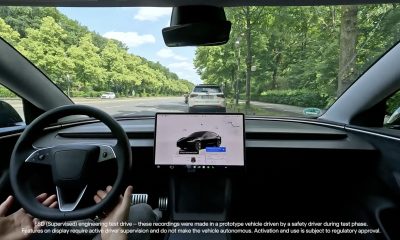
 Elon Musk2 weeks ago
Elon Musk2 weeks agoTesla FSD V14 set for early wide release next week: Elon Musk
-
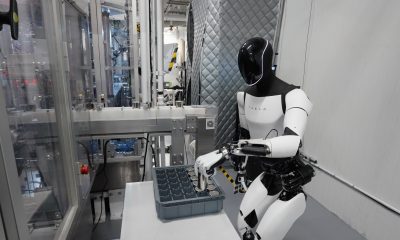
 News2 weeks ago
News2 weeks agoElon Musk gives update on Tesla Optimus progress
-
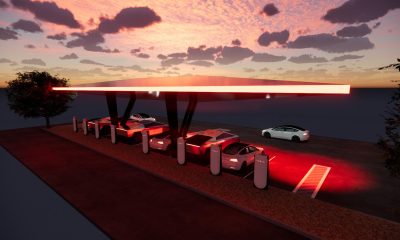
 News2 weeks ago
News2 weeks agoTesla has a new first with its Supercharger network
-
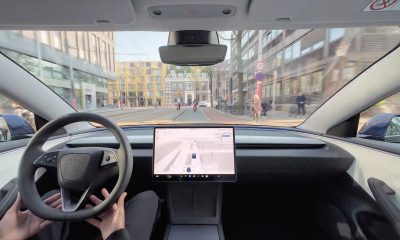
 Investor's Corner2 weeks ago
Investor's Corner2 weeks agoTesla gets new Street-high price target with high hopes for autonomy domination
-
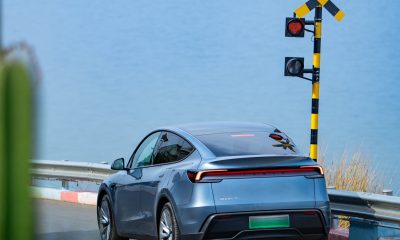
 Lifestyle2 weeks ago
Lifestyle2 weeks ago500-mile test proves why Tesla Model Y still humiliates rivals in Europe
-
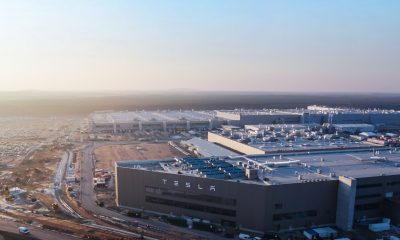
 News2 weeks ago
News2 weeks agoTesla Giga Berlin’s water consumption has achieved the unthinkable
-
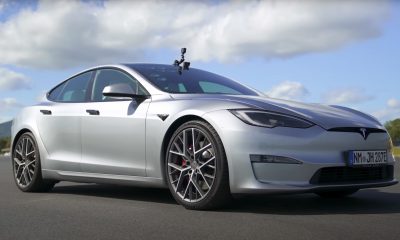
 Lifestyle2 weeks ago
Lifestyle2 weeks agoTesla Model S Plaid battles China’s 1500 hp monster Nurburgring monster, with surprising results
-
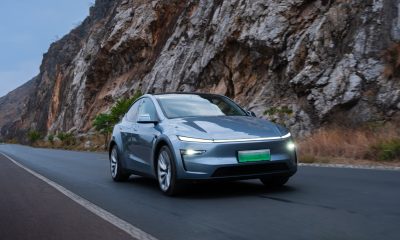
 News2 weeks ago
News2 weeks agoTesla Model Y makes dramatic comeback in Sweden with 492% rise in registrations

